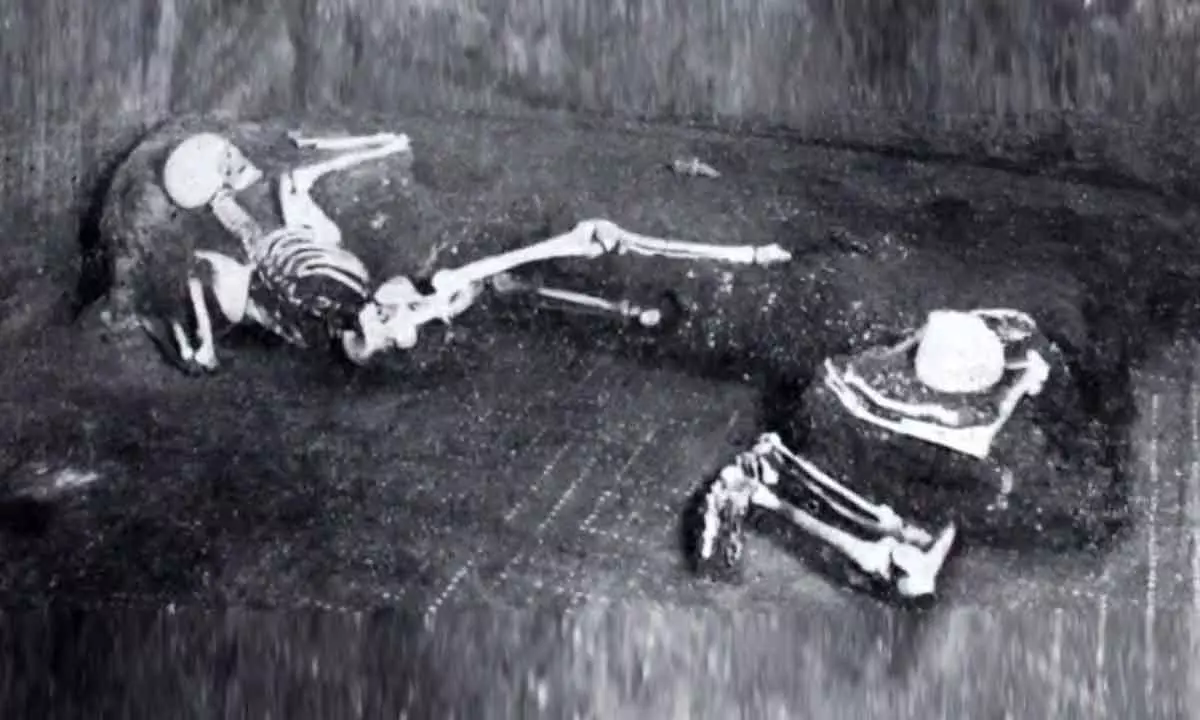Live
- Oxford Grammar High School Celebrates 44th Annual Sports Day with Grandeur
- Indian banking sector’s health remains robust, govt policy working very well: Top bankers
- iOS 18.2 Unveiled: New Features with ChatGPT Integration Revolutionize Your iPhone
- 'Run for Viksit Rajasthan' to be annual event, says CM Sharma
- Nitish Kumar launches '109 free medicine vehicles' in Patna
- India have to play their best cricket at the Gabba to win series: Harbhajan
- Income tax refunds jump 46.3 pc to Rs 3.04 lakh crore in April-Nov
- Financial Intelligence Unit detects undisclosed income worth Rs 11,000 crore in 2024: Centre
- Odisha BJP chief to be elected in January
- AP Home Minister Anitha alerts officials amid rains in heavy Rains in Tirupati
Just In
Scientists Have Sequenced The First Human Genome Discovered In The Ruins Of Pompeii


The two individuals, laying as they died.
- Scientists have now sequenced the genome of a man who died in the Pompeiian House of the Craftsman when he was in his forties
- it indicates that the Italian Peninsula had a high level of genetic variety during the lifetime.
The genetic heritage of one of the victims who sadly perished about 2,000 years ago when the Italian city of Pompeii was destroyed by a volcanic eruption.Scientists have now sequenced the genome of a man who died in the Pompeiian House of the Craftsman when he was in his forties. It revealed his genetic profile and, more intriguingly, the fact that he contracted tuberculosis during his existence.
According to the scientific studies of the genome sequencing, it indicates that the Italian Peninsula had a high level of genetic variety during the lifetime.
Mount Vesuvius' eruption is regarded as one of the most disastrous volcanic disasters in human history. The volcano erupted in 70 CE, killing thousands of people in the surrounding cities of Herculaneum and Pompeii, as well as other communities.The victims were either murdered or suffocated by the gas, ash, and pumice that poured down from the sky when the volcano sent pyroclastic surges racing through its surrounds.

© 2024 Hyderabad Media House Limited/The Hans India. All rights reserved. Powered by hocalwire.com






